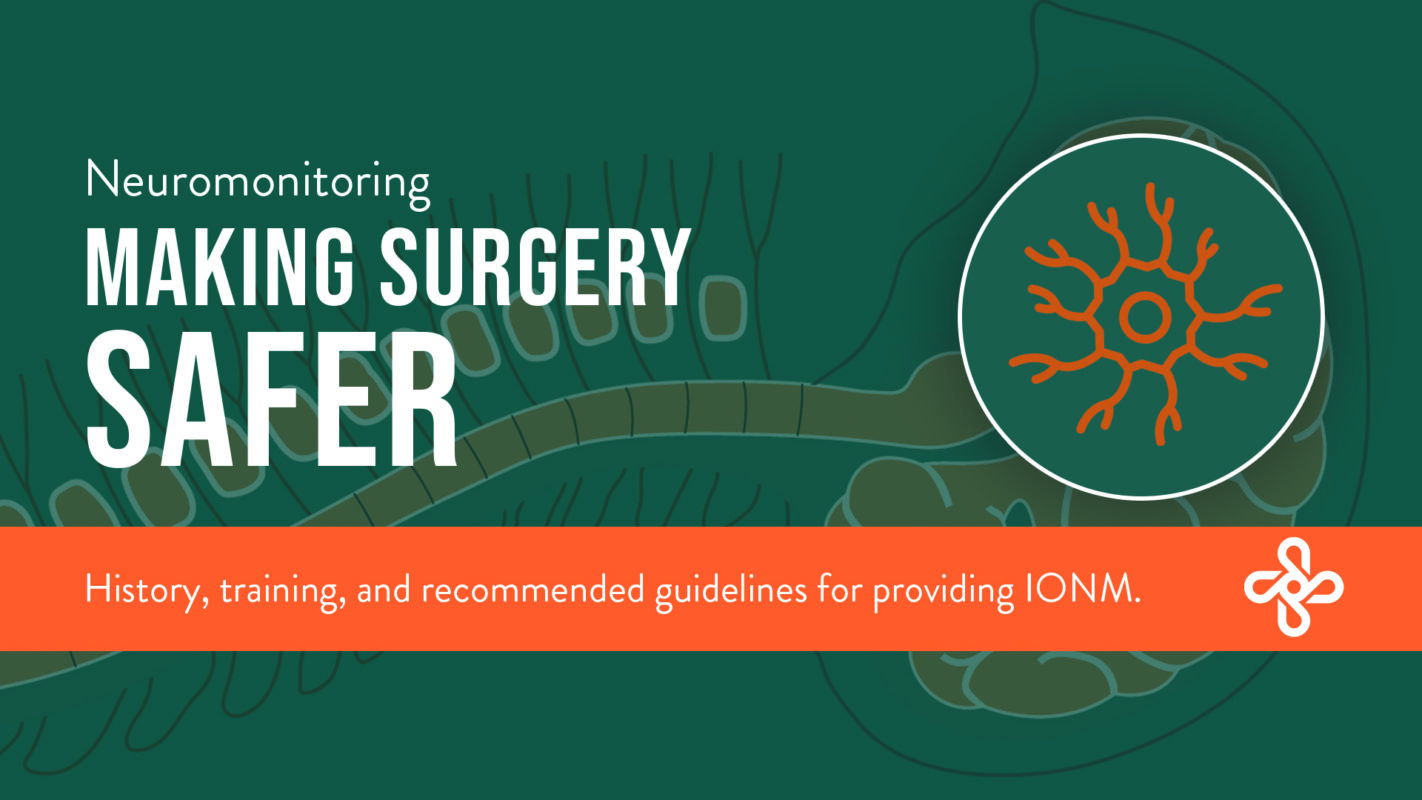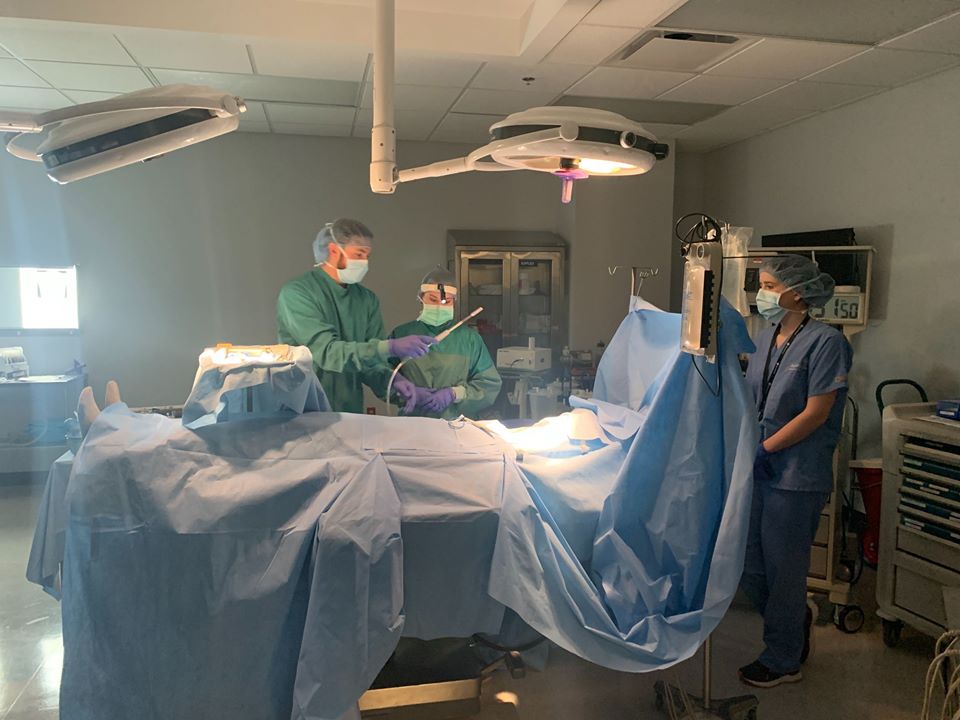
What is Intraoperative Neuromonitoring or IONM?
Intraoperative neuromonitoring (IONM) is the continuous surveillance of a patient’s nervous system (the brain, spinal cord, and nerves) when it can be at risk of injury during surgery. The purpose of IONM is to protect the nervous system.
Depending on the procedure, a variety of tests can be used to measure nervous system function. Usually, IONM works by delivering electrical impulses to the nervous system and measuring their effect. To gather this information, electrodes are attached to the wrists, ankles, scalp, and sometimes to specific muscle groups, depending on the type of surgery.
Download our booklet of infographics for IONM case type uses.
DOWNLOAD FREE INFOGRAPHIC
History of IONM:
Intraoperative neurophysiological monitoring is currently used in thousands of surgical procedures every year across the United States. The first use of IONM dates back to the 1930s when direct stimulation of the brain was used to identify the motor cortex of patients with epilepsy undergoing intracranial surgery. Later on, it was the introduction of new monitoring tests and the invention of the commercial IONM machine in the early 1980s that allowed for the widespread use of the technique.
The 1990s saw transcranial electric motor evoked potentials (tceMEPs) introduced as a method for monitoring spinal cord activity and for predicting postoperative motor problems. Technological advances in the last 20 years have allowed monitoring techniques to continually evolve.
The widespread availability of computer networks and communication systems has allowed IONM to be performed even from remote sites. This has made the technique even more popular in the last decade. Check out our blog on the history of IONM.
Staff Training:
Offering excellent IONM services starts with the hiring and training process. There are only a very few university-based IONM specific education programs that exist, so understanding how your potential IONM partner educates and trains their staff along with the didactic and clinical curriculum they use is vital to your selection process. Read our blog or download our infographic for more information on making sure our clinicians are fully ready for the OR.
Professional Remote Oversight:
Neurologists offer an extra set of expert eyes to identify changes in brain, spinal cord, and peripheral nerve function prior to irreversible damage. Through on-line access, interventions can be implemented quickly to avoid or mitigate long-term neural deficits. SpecialtyCare is dedicated to patient safety and we continue to stay ahead of the curve in finding ways to reduce patient risk and improve surgeon satisfaction. Download our infographic for a list of credentials and experience for hospitals consider outsourcing.
Patient Billing:
Some IONM companies charge rates that are 5 to 10 times higher than the usual and customary standard established in our industry and then attempt to collect the portion of this bill
that is beyond what the insurance carrier will pay for from the patient. This is called “balance billing.” Read our blog on the SpecialtyCare difference.
If you are new to neuromonitoring, in the process of an evaluation, or would just like a reference, we have a guide for you. Download our book of infographics for a fun and digestible way to learn more about neuromonitoring.
About SpecialtyCare
SpecialtyCare is the industry leader in perfusion and intraoperative neuromonitoring, providing staff and resources to 1,100 hospitals and health systems nationwide. We offer services such as perfusion, ECMO, autotransfusion, sterile processing consulting, surgical assist, and complex instrument support. Our job is to make surgery safer, share innovation and research using our extensive knowledge base, and help your health system maintain standards of excellence and improve patient outcomes year after year. To learn more about our services, contact us today.



Comments are closed.